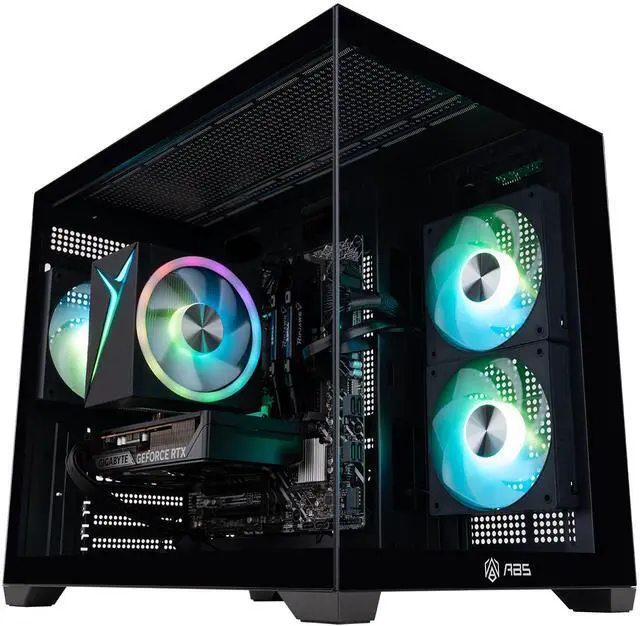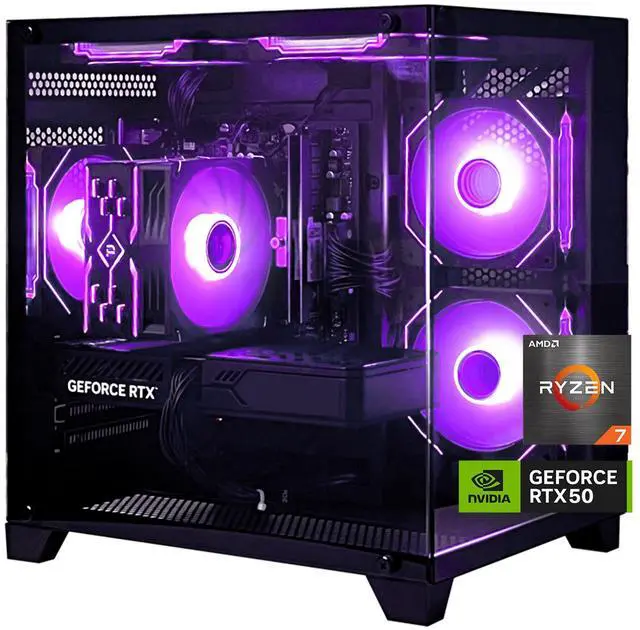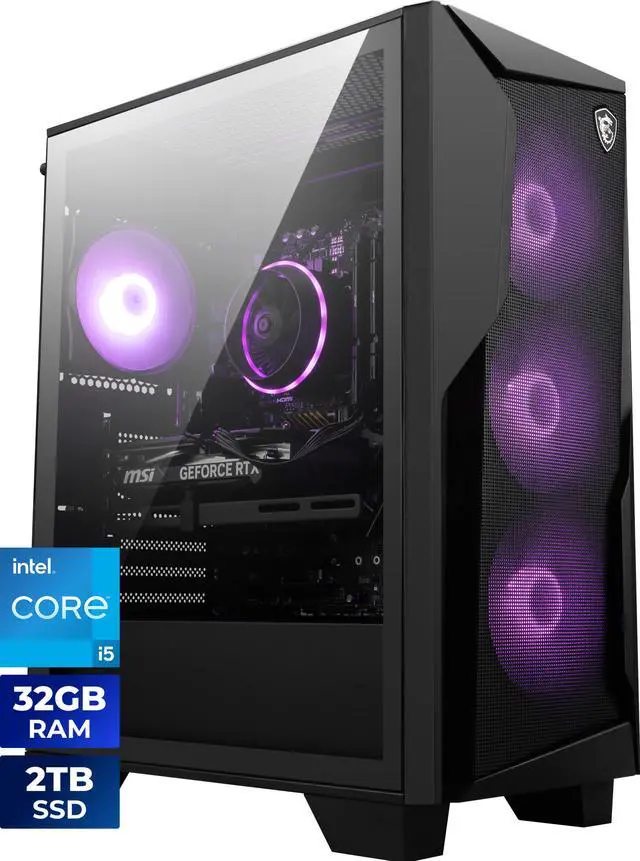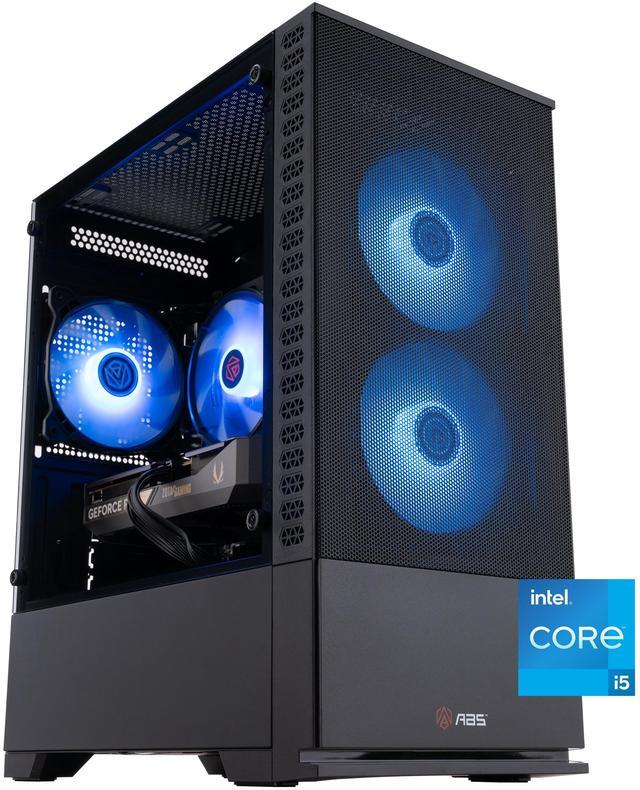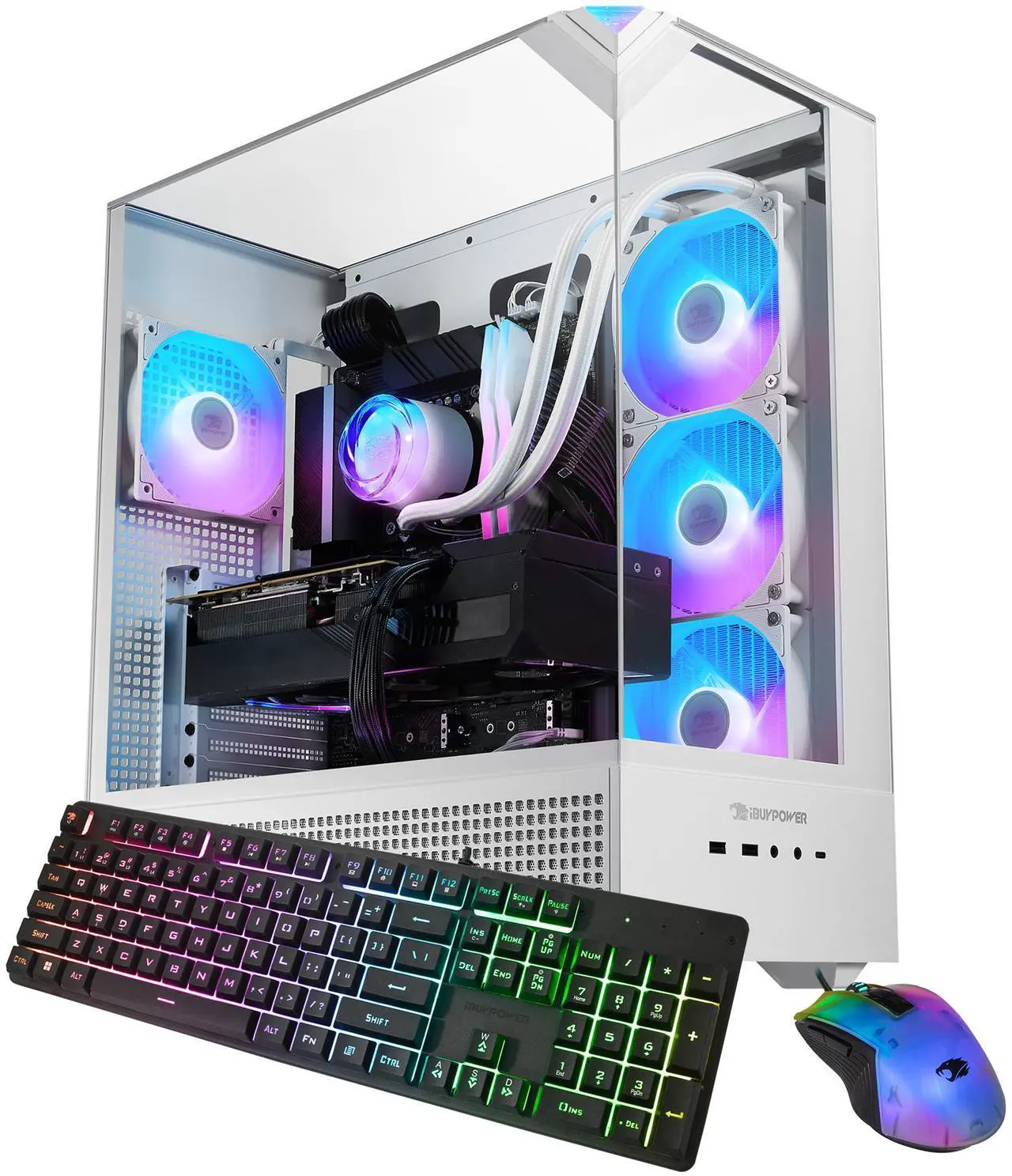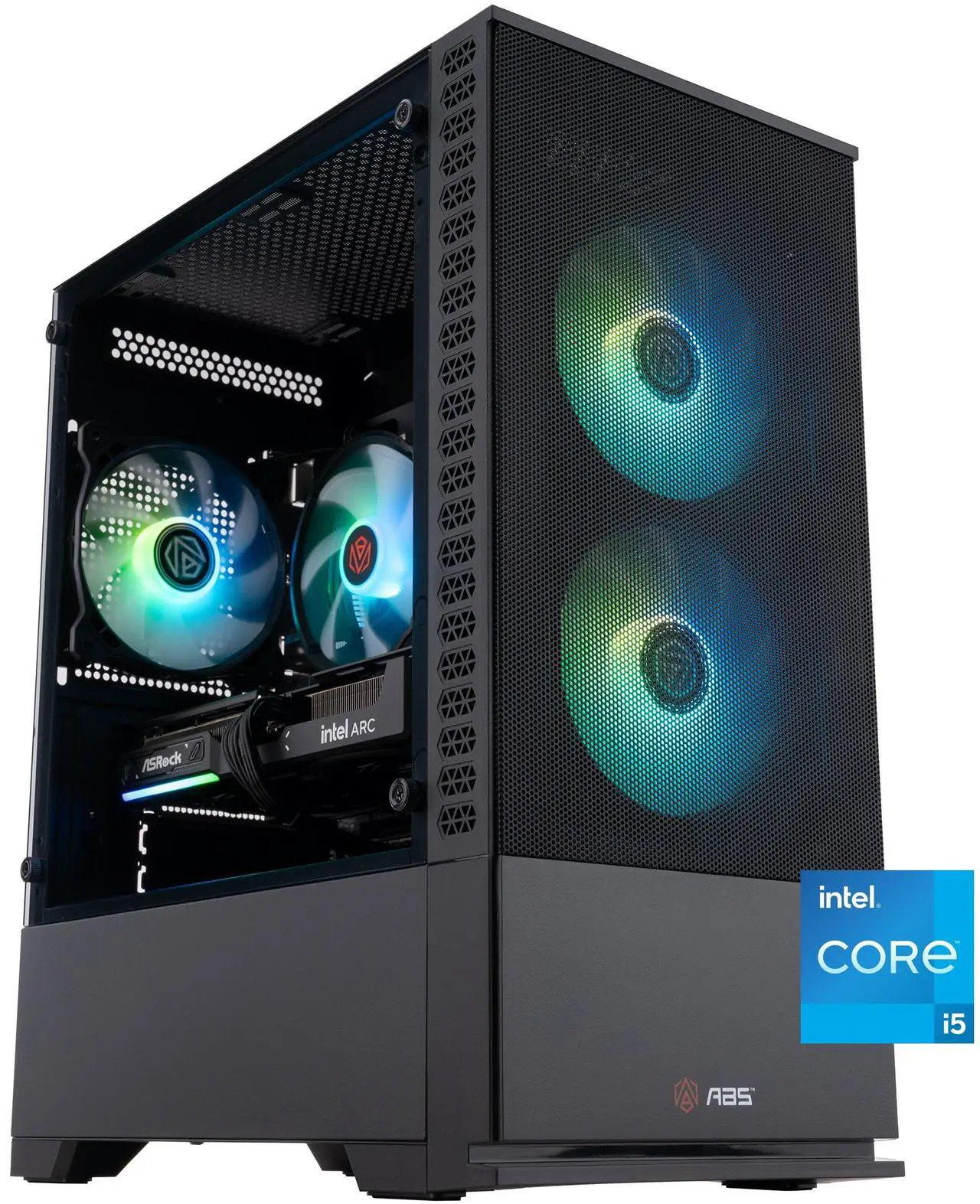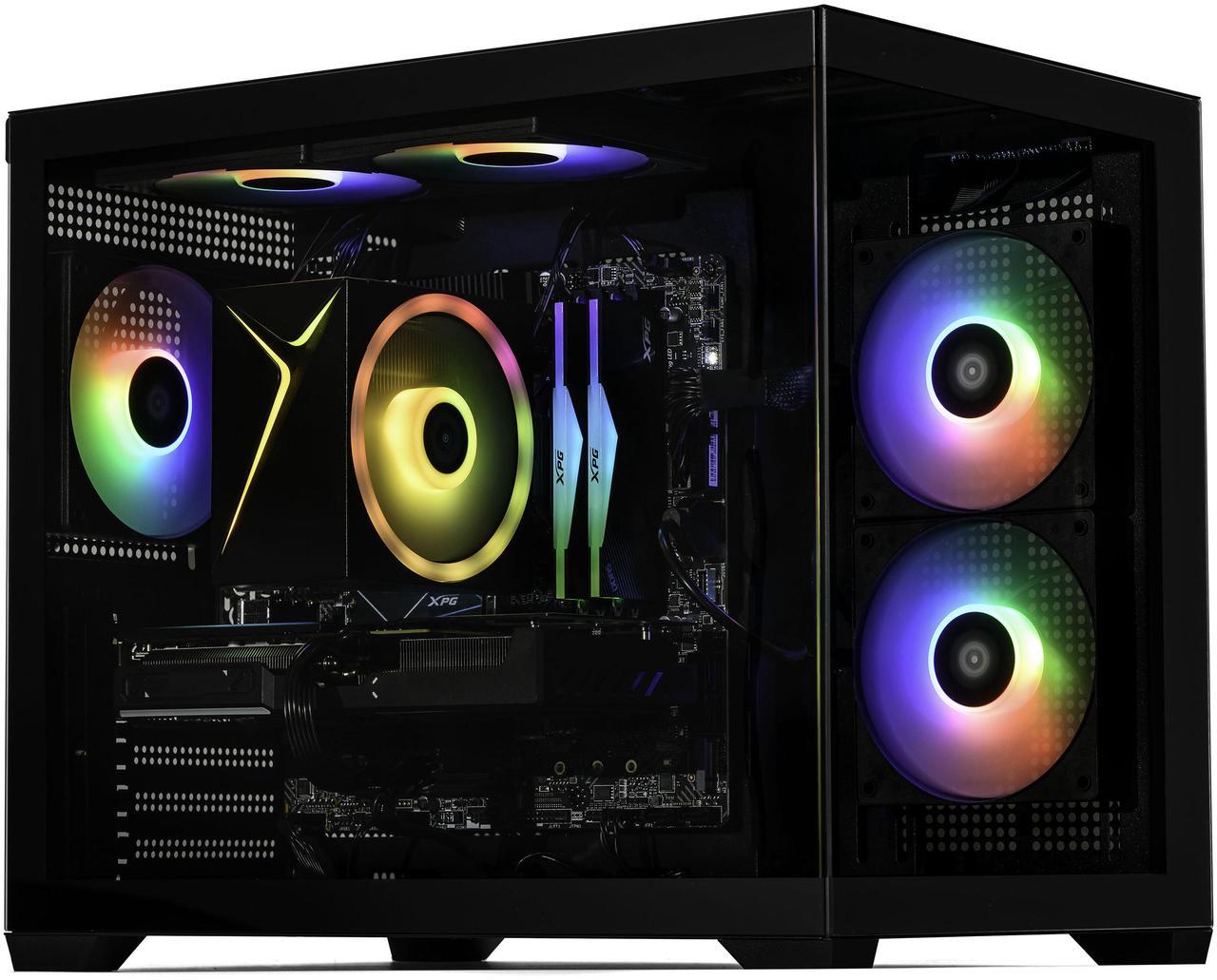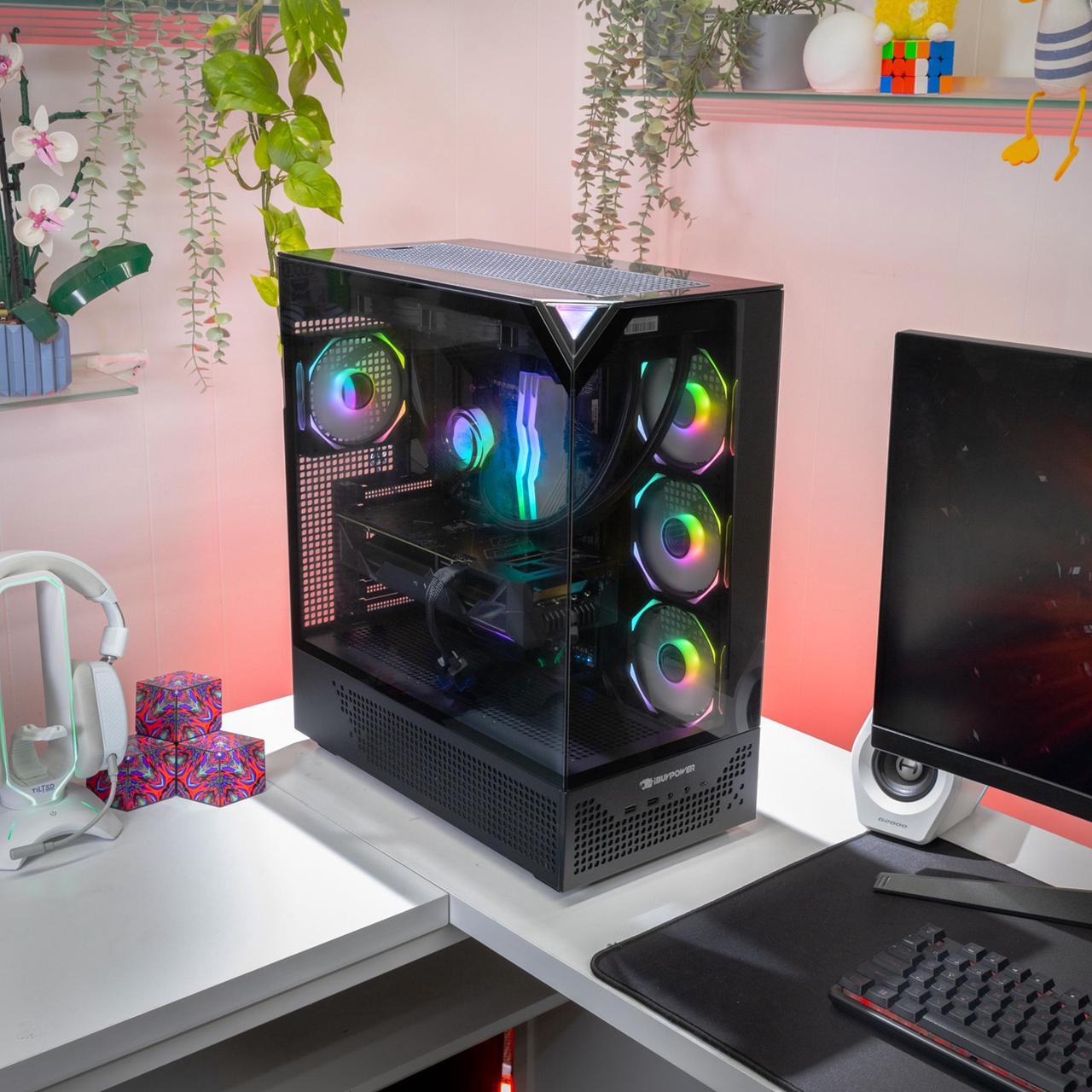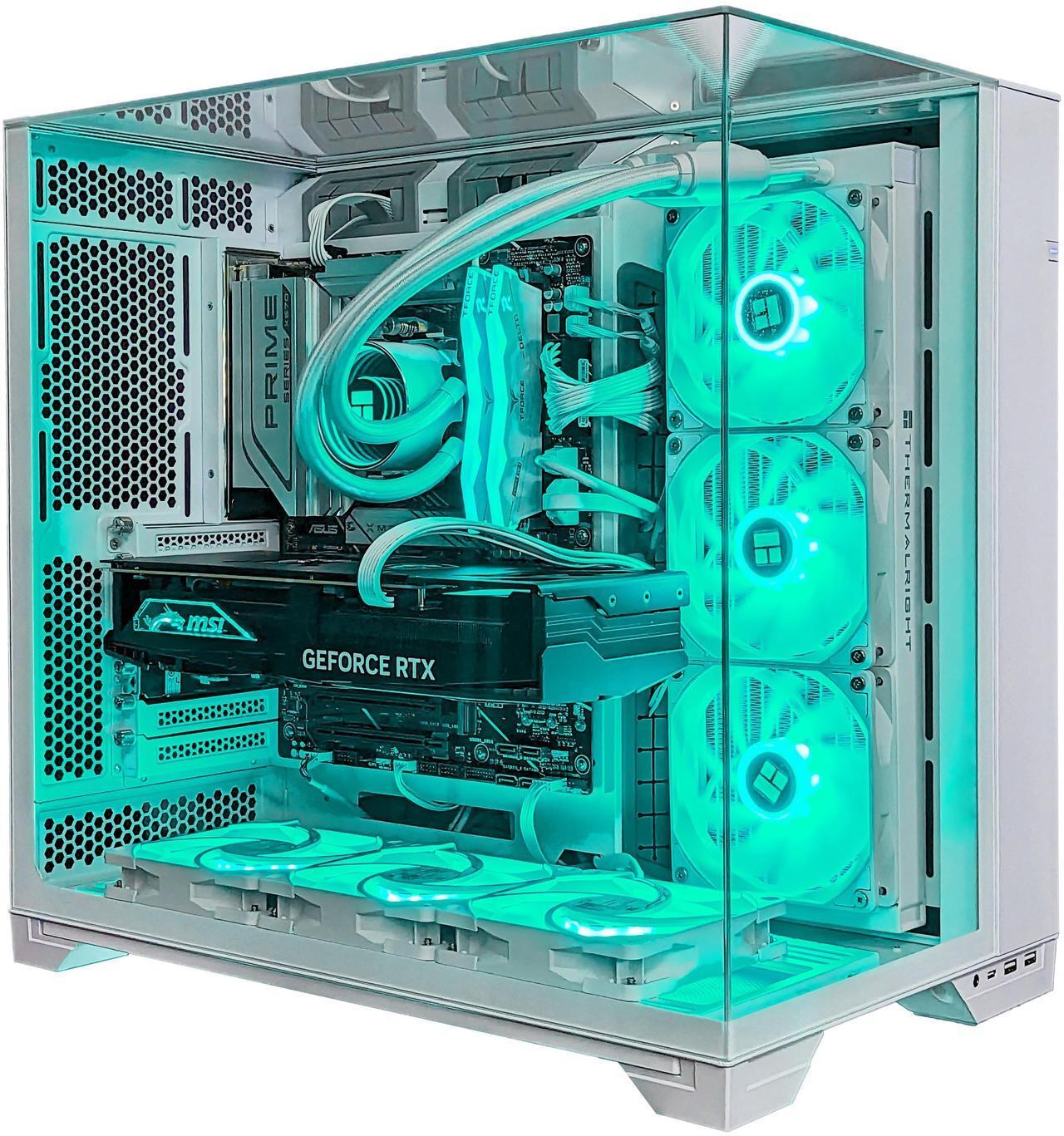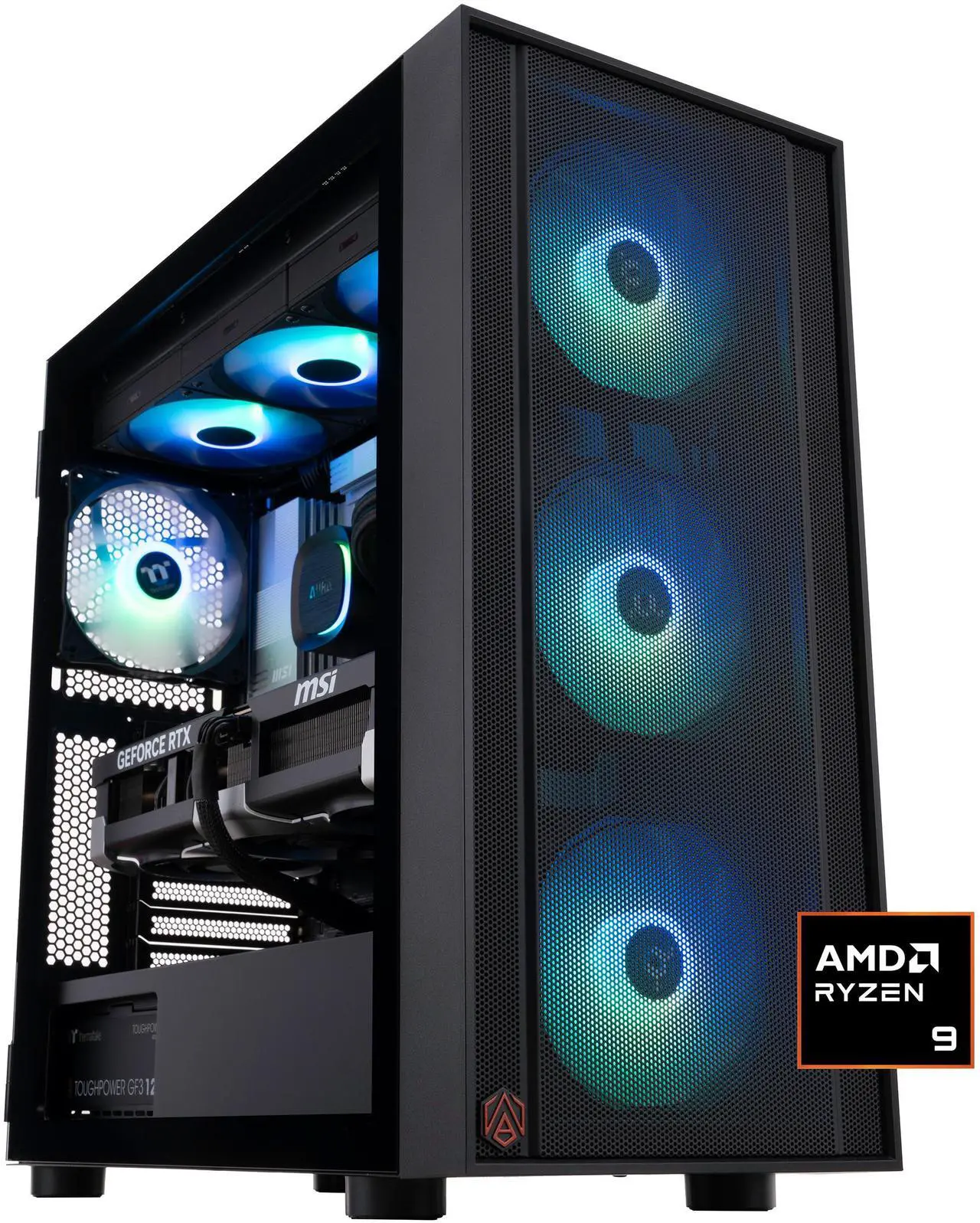
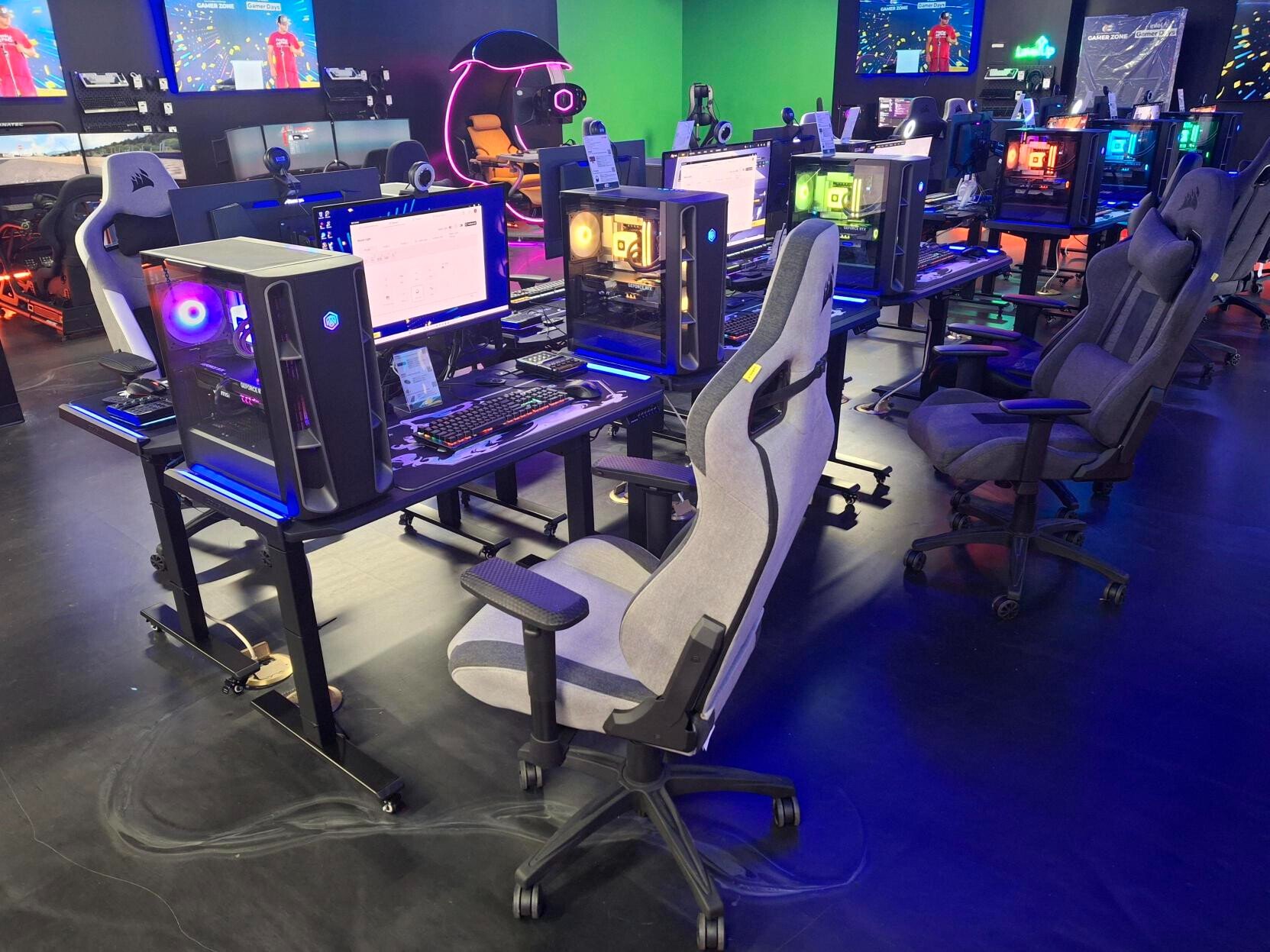
If you’ve ever tried to buy a gaming desktop pc and felt like you were reading spaceship blueprints—same. The good news? You don’t need to memorize chipset charts or decode model names to get a great rig. You just need to match what you play and how you play to the right parts, set a sensible budget, and avoid a few common traps. This guide walks you through the whole thing—fast.
Big idea: buy for the experience you want (resolution, refresh rate, settings), not for the fanciest spec line on the page.
Step 1: Decide your target experience (this makes everything easier)
Let’s lock in the goal first. Picture the games you play most and circle your combo:
- 1080p, 144–240Hz, High/Ultra (esports & competitive)
- 1440p, 120–165Hz, Ultra (today’s sweet spot)
- 4K, 60–120Hz, High/Ultra (cinematic + wow factor)
- 4K with ray tracing on (showpiece builds)
Once you know this, choosing parts becomes blissfully simple. The PC world is full of shiny distractions—this keeps you focused.

Step 2: The specs that actually matter in 2025 (no fluff)
Here’s the plain-English checklist to read any product page like a pro:
- GPU : This makes frames. For 1080p, mid-range is great; for 1440p, aim mid-to-upper mid; for 4K/RT, go high-end.
VRAM guardrails: 1080p (8–12GB), 1440p (12–16GB), 4K/RT (16–24GB+). - CPU : A modern 6–8 cores is plenty for esports/1080p; 8–12 cores is nice for 1440p/4K with Discord, Chrome, and recording in the background.
- Memory: 32GB DDR5 is the sweet spot. It’s smoother for streaming, modding, and browser tabs.
- Storage: A 1TB NVMe SSD for OS + favorites is the baseline; a second M.2 slot makes life easier later.
- Cooling & case: Mesh front + at least 3 case fans keeps temps (and noise) in check. A 240/280mm AIO or tall tower cooler = stable boosts.
- Power supply: Quality 80+ Gold/Platinum with ~100–150W headroom. For high-end GPUs, confirm the newer power lead (often 12V-2×6) and clean cable routing.
- Connectivity: Wi-Fi 6E/7, 2.5GbE, front USB-C, and enough rear USB for your gear.
Pro tip: prefer prebuilts that list the exact GPU model, RAM speed (e.g., DDR5-6000), PSU wattage, and the motherboard chipset. Vague listings are a red flag.
Quick Picks by Budget (now with GPU targets)
Use these as shopping guardrails. If a desktop’s GPU falls below the target for that tier, keep scrolling or push for a better price.
Under $900 — 1080p High (entry that doesn’t feel “entry”)
-
What it should do: buttery esports at 1080p; 60–144Hz in big AAA with sensible settings.
-
Spec baseline: modern 6-core CPU, 16–32GB RAM, 512GB–1TB NVMe.
-
GPU targets:
-
NVIDIA: GeForce RTX 5060 (8GB) — modern features + DLSS 4; great 1080p starter.
-
AMD: Radeon RX 7600/7600 XT (8–16GB) — solid value 1080p cards. (Use if pricing undercuts RTX 5060.)
-
Intel (value alt): Arc B570 (10GB) — good 1080p value; drivers have matured.
-
-
Why it works: competitive titles favor clocks and 1% lows more than raw RT; you don’t need a monster GPU to have fun.
-
First upgrades later: add a 1–2TB NVMe; then bump the GPU if you catch the 1440p bug.
$900–$1,400 — 1080p Ultra or 1440p High (the value sweet spot)
-
What it should do: 1080p Ultra at high refresh; 1440p High/Ultra mixes on modern games.
-
Spec baseline: 6–8 cores with strong boost, 32GB RAM, 1TB NVMe.
-
GPU targets:
-
NVIDIA: GeForce RTX 5060 Ti or RTX 5070 — adds headroom for 1440p.
-
AMD: Radeon RX 9060 XT (16GB) — AMD’s 1440p-Ultra class; generous VRAM.
-
Intel (stretch value): Arc B580 (12GB) — 1440p-capable with tuned settings; strong media engine.
-
-
Nice-to-haves: mesh case, 650–750W PSU, two M.2 slots.
$1,400–$2,000 — 1440p Ultra @ 120–165Hz (the “just right” zone)
-
What it should do: crush 1440p Ultra; still flies in 1080p competitive; dabble in 4K with upscalers.
-
Spec baseline: 8–12-core CPU, 32GB RAM, 1–2TB NVMe, robust cooling.
-
GPU targets:
-
NVIDIA: GeForce RTX 5070 Ti — DLSS 4 + great 1440p/entry-4K leverage.
-
AMD: Radeon RX 9070 XT (16GB) — excellent raster at 1440p/4K-lite.
-
Alt: RTX 4070 Super / RX 7800 XT (previous gen) when pricing is hot.
-
$2,000–$3,000 — 4K High / RT On @ 60–120Hz (enthusiast)
-
What it should do: true 4K with smart settings; RT on in many titles using upscaling/frame-gen.
-
Spec baseline: fast 8–12-core CPU, 32–64GB RAM, 2TB NVMe, big cooler, airflow-first case.
-
GPU targets:
-
NVIDIA: GeForce RTX 5080 — excellent 4K with DLSS 4 + MFG; easier on power than flagship.
-
AMD (raster-first alt): Radeon RX 9070 XT — rely on FSR where supported.
-
-
Don’t forget: ensure PSU has clean cabling and headroom for GPU spikes.
$3,000+ — 4K Ultra + RT showcase / Creator-Gaming hybrid (flagship)
-
What it should do: 4K Ultra/RT with upscaling + frame-gen; premium acoustics; creator-friendly encoders.
-
Spec baseline: halo 12–16 cores (or top 8–12), 64GB RAM, 2TB+ NVMe (Gen4/Gen5).
-
GPU targets:
-
NVIDIA: GeForce RTX 5090 (32GB GDDR7) — current apex for 4K/RT and creator workloads
-
Alt: RTX 5080 if you want near-flagship 4K without halo pricing.
-
-
Who it’s for: you want quiet speed and run video/3D/AI locally.
Prebuilt vs. DIY: which makes sense for you?
- Prebuilt: buy this if time, warranty, and zero-stress setup matter most. Cable management, driver burn-in, and OS activation are done for you.
- DIY: choose this if you like picking every part and stretching your dollar.
- Best of both: a prebuilt that uses standard, off-the-shelf parts (ATX PSU, retail GPU, standard motherboard) so upgrades are as easy as DIY later.
Day-One Setup: quick wins that feel like upgrades
- Update Windows + GPU drivers. If you replaced a system, consider a clean GPU install.
- Set your monitor to its real refresh rate in Windows and enable G-Sync/FreeSync.
- Thermal shakedown: play a heavy scene for 20–30 minutes; aim for GPU ≤ 80–85°C, CPU ≤ 90°C under sustained load.
- Tune a quiet fan curve. Losing 1–2°C for a couple dB less noise is a win.
- Put your top games on the NVMe. Archive the backlog to secondary storage.
- Back up now while the install is clean.
Common mistakes (and how to dodge them)
- Buying by brand instead of the actual GPU tier and cooler.
- Skimping on the PSU—headroom is silence and stability.
- Forgetting VRAM—average FPS can look fine while texture swaps stutter.
- Choosing a solid-front case with poor airflow because it “looks clean.”
- Paying for 4K performance on a 1440p monitor (invisible FPS is still invisible).
Newegg shortcuts
Your master list of prebuilt gaming rigs, from budget 1080p boxes to 4K/RT powerhouses. Use filters for GPU/CPU/RAM/price, sort by Best Deals/Biggest Discount/Lowest Price, and compare AIB variants to match your monitor and budget without hunting across multiple pages.
A direct view of ABS rigs only, pre-filtered to gaming desktops. Great if you want plug-and-play performance with standard components (ATX PSUs, retail GPUs, roomy cases) that make future upgrades easy—plus consistent builds and clear part lists on every product page.
Mix and match parts with automatic compatibility checks and real-time pricing. Clone a prebuilt you like, swap the GPU or storage to fit your needs, export to cart, or save a parts list for later. Perfect for side-by-side comparisons before you commit.
- PC Upgrader (AI-powered upgrade advice):
Tell us what you’re running now and get targeted, drop-in upgrade suggestions—GPU, RAM, SSD, or PSU—without rebuilding your whole system. Ideal for squeezing more FPS from a solid base and budgeting toward a bigger platform jump later. - Gaming PC Finder (filter by games/budget):
Pick your top titles, set a budget, and see desktops that meet (or beat) recommended specs. Great for first-time buyers who want a quick shortlist aligned to actual games, not just part numbers—then click through to compare thermals, noise, and upgrade paths.
FAQ
Is 8GB of VRAM enough in 2025?
Sometimes—12GB+ is safer. 8GB handles 1080p High in many games, but 1440p Ultra and big texture packs push past it. For 4K or ray tracing, think 16–24GB+.
How big should my power supply be?
Take your typical gaming draw and add ~100–150W. Go for 80+ Gold/Platinum from a reputable brand. High-end GPUs may use a newer 12V-2×6 power lead—route it cleanly and seat it firmly.
Will my CPU bottleneck a high-end GPU?
It can—especially if you chase 200–300 fps at 1080p/1440p. For 4K, the GPU is usually the limit. Match your CPU/GPU to your frame-rate goal, not just resolution.
Prebuilt or DIY—which is better value?
Depends on you. Prebuilt = time saved + one warranty. DIY = maximum control and often more performance per dollar. Prebuilts with standard parts are a great compromise.

